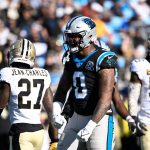AP/Carolyn Kaster
- The Federal Reserve raised interest rates on Wednesday, ending the near-zero rates of the pandemic.
- The move comes as the Fed looks to tame inflation, which is holding strong at four-decade highs.
- The rate hike will translate to pricier car loans, mortgages, and credit card payments.
The record-low interest rates seen throughout the coronavirus crisis are no longer.
The Federal Reserve raised its benchmark interest rate on Wednesday, ending a two-year period of near-zero rates and taking its biggest step yet toward cooling inflation. The Federal Open Market Committee lifted the federal funds rate by 0.25 percentage points, matching forecasts broadly held by economists for weeks. The move kicks off a cycle of rate increases expected to last throughout the rest of the year at the very least.
“The Committee seeks to achieve maximum employment and inflation at the rate of 2% over the longer run,” the Fed said in a statement. “In support of these goals, the Committee decided to raise the target range for the federal funds rate to 0.25% to 0.5% and anticipates that ongoing increases in the target range will be appropriate.”
The Wednesday hike will reverberate throughout the economy in the coming weeks. Lenders’ rates are directly influenced by the Fed’s benchmark, and when the central bank raises its own rate, borrowing costs around the country edge higher. That means all forms of borrowing from car loans to credit card interest payments are poised to get slightly more expensive.
The rate increase officially reverses one of the Fed’s main policy supports used to aid the virus-slammed economy. The central bank pulled rates close to zero in March 2020 as the coronavirus’s spread sparked widespread lockdowns and froze economic activity across the country. The historically low rates helped people and businesses borrow cash at low costs, giving Americans a major support as the country slid into the deepest recession in nearly a century.
But while cheap cash offered a bridge for struggling households, it also played a role in allowing inflation to hit the fastest pace in four decades. Low borrowing costs encouraged spending and helped demand rebound throughout 2021. Spending boomed, but supply struggled to keep up. The gap between the two led businesses to raise prices at a faster pace, kickstarting the inflation problem the country faces today.
The benchmark interest rate serves as the Fed’s top tool for cooling the economy and pulling inflation lower. By raising rates, the Fed can dampen demand and, in turn, close the imbalance that fuels inflation.
Whether the Fed timed its rate decision correctly remains to be seen. Many economists have blamed the central bank for allowing inflation to hit historic highs, arguing policymakers moved too late to slow the price surge. Former Treasury secretary Larry Summers has been among the Fed’s biggest critics in recent months. Summers has repeatedly slammed the Fed for the inflation problem and, in a Tuesday column in The Washington Post, said the late rate hike risks persistently high inflation and a new economic downturn.
“The Fed’s current policy trajectory is likely to lead to stagflation, with average unemployment and inflation both averaging over 5 percent over the next few years — and ultimately to a major recession,” he said.
This story is breaking, check back soon for updates.
Powered by WPeMatico





